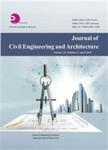The Arckitbuilding Bricks as a Didactic Tool for Experimentation in Architectural Design: Possibilities and Limitations
The Arckitbuilding Bricks as a Didactic Tool for Experimentation in Architectural Design: Possibilities and Limitations作者机构:Graduate Program in Built Environment Federal University of Juiz de Fora Juiz de Fora 36036-900 Brazil Faculty of Architecture and Urbanism Federal University of Juiz de Fora Juiz de Fora 36036-900 Brazil
出 版 物:《Journal of Civil Engineering and Architecture》 (土木工程与建筑(英文版))
年 卷 期:2018年第12卷第1期
页 面:59-64页
学科分类:08[工学] 0813[工学-建筑学] 081301[工学-建筑历史与理论]
主 题:Physical model building bricks didactic tool education design architecture.
摘 要:This article deals with the usage of building bricks as a didactic material for the development of architectural design. The building brick game chosen for analysis was the Arckit, since it is suitable for the architectural practice. It is estimated that this game can contribute to the design, representation and presentation of projects. In order to investigate in which aspects Arckit presents possibilities of applications, as well as limitations of use, the article approaches the importance of building bricks as a didactic tool and its use in the field of the architectural design process. From a literature review and an empirical experience, this article reports a qualitative research, where the applicability of the Arckit game was checked. Through a critical reflection based on that experience, it was possible to conclude that whereas its limitations to urban form and linked to the formal vocabulary that composes the grammar of these bricks, the Arckit building bricks represent in architecture a playful and experimental way to think and design, fomenting the creativity and the spatial perception, resulting in a particular experience that can make architecture better connected with dreams and joy.



